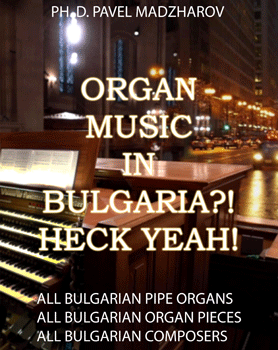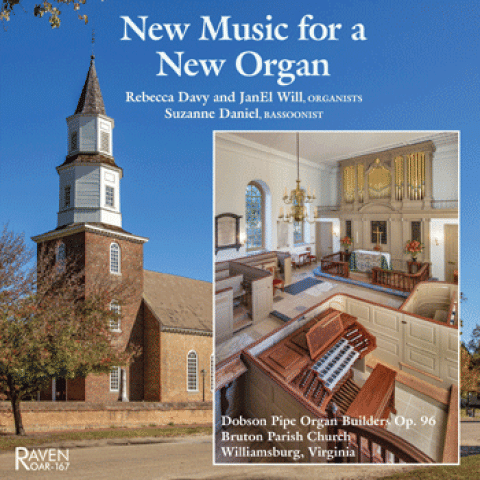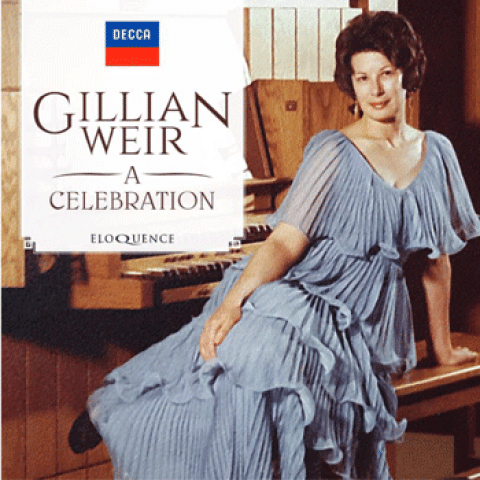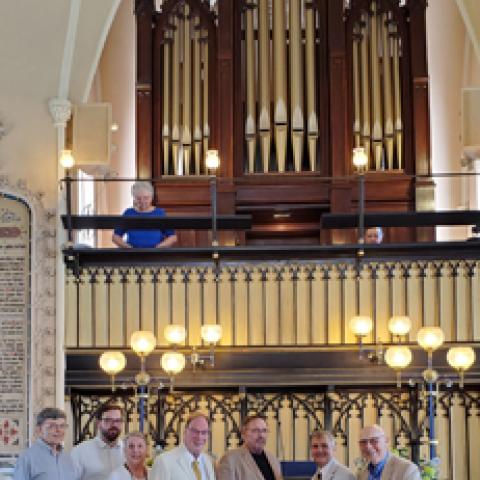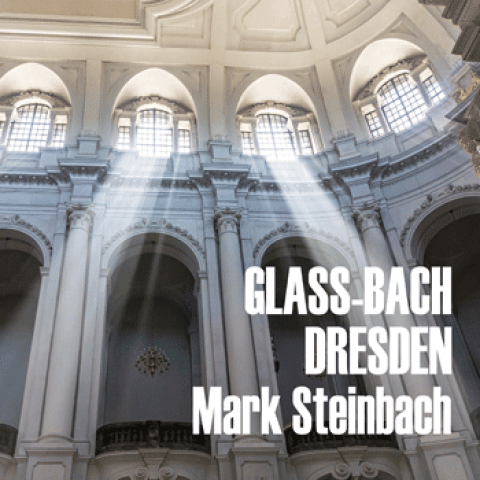That ingenious business
Great Britain’s King George III (1738–1820), whose oppressive rule over the American colonies led to the American Revolutionary War, has resurfaced in public conversation as a character in Lin-Manuel Miranda’s brilliant musical, Hamilton. In the king’s featured song, “You’ll be back” (in the style of The Beatles), the crazy king addresses the colonists, singing,
Why so sad? Remember we made an arrangement when you went away? Now you’re making me mad. Remember, despite our estrangement, I’m your man. You’ll be back, soon you’ll see, you’ll remember you belong to me. . . . And when push comes to shove, I will send a fully armed battalion to remind you of my love. . . .
Wendy and I were fortunate to see Hamilton in the first months of its run on Broadway and were thrilled by the whirling, swirling singing and dancing from the first moments. Sitting to my right was a curmudgeonly man who looked like Winston Churchill (though thankfully not as large) who did not crack a smile until King George made his mincing appearance.
The American pipe organ industry started in the eighteenth century before the birth of “Mad King George.” Johann Gottlob Klemm (1690–1762) was born in Dresden, Germany, where he apparently apprenticed with the great organ builder Gottfried Silbermann (1683–1753). Silbermann was nearly an exact contemporary of Johann Sebastian Bach (1685–1750), who was a great champion of Silbermann’s organs, though a little skeptical of the pianofortes Silbermann built late in his life. Klemm built the first organ for the church now known as Trinity Church Wall Street, New York (in a previous building at the same location), and lived in New York City’s Moravian community until 1757, when he learned that the Moravians in Bethlehem, Pennsylvania, needed an organ.1
David Tannenberg (1728–1804) was born in Germany, moved to Zeist, the Netherlands, in 1748, and emigrated to Bethlehem, Pennsylvania, in 1749. He first worked as a joiner, and when Klemm arrived in Bethlehem in 1757, he became Klemm’s apprentice and assistant. After Klemm’s death in 1762 Tannenberg did no organ work for three years, but between 1765 and his death in 1804 he was involved in building more than forty organs.2 As he grew older and became concerned that he had no apprentice who could carry on his work, Tannenberg obtained permission from the Moravian elders in Lititz, Pennsylvania, to write to elders in Herrnhut, Germany, asking them to send a suitable candidate. In response, Johann Philip Bachmann (1762–1837) arrived in Bethlehem on February 17, 1793. Two months later he married Tannenberg’s daughter, Anna Maria. Tannenberg and Bachmann worked together building organs until 1800 when tensions between them following Anna Maria’s suicide in 1799 led to their parting ways.3 While installing the organ in the Lutheran church in York, Pennsylvania, seventy-six-year-old David Tannenberg fell from a scaffolding on May 17, 1804, and died two days later.4
While most of David Tannenberg’s organs were built in Pennsylvania, he also built instruments for destinations in Albany, New York; Frederick, Maryland; and Salem, North Carolina. It is almost 500 miles from Bethlehem to Salem. I can drive that far in less than seven hours in air-conditioned comfort. It must have been a rough slog to transport an organ such a distance on eighteenth-century roads. There are only a few Tannenberg organs extant, notably the 1798 “Single Brothers’ House” organ restored by Taylor & Boody and installed in a new concert hall at the Museum of Early Southern and Decorative Arts in Old Salem, North Carolina.
Philip Bachmann built organs under his own name until 1821. An organ built by Bachmann in 1819 has been restored by Paul Fritts & Company in Tacoma, Washington, and is now available for installation in a suitable historic and architectural home. You can read the prospectus and see photos at the Fritts website: frittsorgan.com/opus_pages/galleries/bachmann_reconstruct/bachmann_prospectus.html.
Consider these dates. Klemm’s career in America started in the late 1730s—his organ at Trinity Church Wall Street was built in 1741, nine years before Bach’s death. Tannenberg’s career was in full swing in the 1770s, concurrent with the American Revolutionary War. Bachmann died in 1837 when Felix Mendelssohn was twenty-eight and Johannes Brahms was four years old. Klemm, Tannenberg, and Bachmann were all German-born American immigrants who built dozens of organs for the Moravian communities in Pennsylvania, Maryland, and North Carolina during America’s Colonial period. Wolfgang Amadeus Mozart lived from 1756 to 1791; he was twenty years old at the start of the American Revolution.
Three important books
Orpha Ochse (born 1925) received a Master of Music degree from the Eastman School of Music in 1948 and a PhD in 1953. She is ninety-eight years old. The University of Indiana Press published her masterful The History of the Organ in the United States in 1975. The worn and be-scribbled hardcover copy on my desk in Maine is inscribed with my name and “Oberlin, 1975.” I purchased it from the Co-op Bookstore in Oberlin the year it was published. I was nineteen.
Ochse’s book includes the histories of hundreds of American organbuilders, both companies and individuals. She traces the connections between personalities telling us who worked and apprenticed for whom, who influenced whom, and who formed and dissolved partnerships. The book is organized by regions and eras (“Rural Society,” “Expanding Society,” “Industrial Society,” “the Twentieth Century”). The comprehensive index includes thousands of entries making it a necessary first tool for someone like me who spends each day in the office considering and discussing dozens of organs. Many of the biographical details I am including here came straight from Ochse’s book.
The History of the Organ in the United States was released in paperback in 1988 and is still available from the University of Indiana Press, Barnes & Noble, and other retailers. If there is an organist in your life who does not own a copy, here is a great gift suggestion. Tell them I sent you.
Organbuilder Raymond Brunner (1949–2020) lived and worked around Lititz and Lancaster, Pennsylvania, home of many organs built by David Tannenberg and the other Moravian-Pennsylvania Dutch organbuilders. He wrote the authoritative history of that era of American organbuilding under the title That Ingenious Business, published by the Pennsylvania German Society in 1991. It includes technical and mathematical information of interest to the sophisticated organbuilder and portrayal of daily life at the end of the eighteenth century, such as a drawing of a Sunday morning at Christ Lutheran Church in York, Pennsylvania, with main floor and balcony packed with worshippers, the Tannenberg organ, a preacher gesticulating from the pulpit, and an usher with a stick chasing a dog. ’Twas ever thus. I last saw Ray at breakfast in New York during early planning for the restoration of the organ at Old Saint Patrick’s Cathedral. I am sorry he did not live to see it.
Stephen L. Pinel’s The Work-list of Henry Erben, Organ Builder in Nineteenth-Century New York was published by the OHS Press, the Organ Historical Society, in 2021. It is a 624-page monster with appendices and indices that include many historical photographs, timelines, and detailed descriptions of most every Erben organ, alongside contemporary descriptions, reviews, often accompanied by newspaper articles. Its six pounds of minutia about one of America’s most influential organbuilders means that it is not a book for everyone, but a carefully researched, exhaustive tome of immense value.
An urban Erben
Henry Erben (1800–1884) was a premier organbuilder in New York City who built hundreds of organs for locations in New York, New England, and as far away as Texas and California. Imagine the logistics of moving an organ from New York to San Francisco in 1858. Calvary Church (Presbyterian) in San Francisco was formed in 1854 and commissioned an organ from Erben shortly after. The organ was completed in 1858 and loaded onto the clipper ship Caroline Tucker, which left New York on May 13, 1858, and carried the organ around Cape Horn “west about” to San Francisco.5
Erben’s father Peter (1771–1863) built organs and pianos and was organist at Trinity Church, New York (known now as Trinity Church Wall Street), into the 1840s. Thomas Hall (1791–c.1875) was an organbuilder who started working in Philadelphia around 1812. In that same year he installed an organ in Saint John’s Chapel in New York and was assisted by twelve-year-old Henry Erben. Hall moved to New York in 1817, and Henry became his apprentice. They formed the partnership Hall & Erben in 1821, which was dissolved in 1835.6 Between 1824 and his death in 1884, Henry Erben produced 1,333 organs, 250 of which were built between 1856 and 1860, the firm’s busiest five years.7 That’s more than an organ a week. In 1846 Erben built a new four-manual organ for Trinity Church Wall Street (replaced by Hook & Hastings Opus 2168 in 1907), where he quarreled publicly with the church’s organist, Dr. Edward Hodges, who had succeeded his father.
The Erben workshop was located on a corner of Canal and Centre Streets in lower Manhattan, in the neighborhood now known as Little Italy, one mile from Trinity Church. Erben’s largest intact extant organ was built in 1868 for what is now the Basilica of Saint Patrick’s Old Cathedral at Prince and Mulberry Streets in NoLIta (north of Little Italy), just six blocks north of the workshop. As I write, the Organ Clearing House is completing the dismantling of the organ at Old Saint Patrick’s and shipping it to Brunner & Company in Pennsylvania for restoration. I was in the city last week as the project started and walked between those two churches. It was fun to imagine running into Mr. Erben as he walked the streets between his workshop and two of his important clients. Maybe I would treat him to a fruit smoothie, ubiquitous in the neighborhood today. I wonder what would amaze him most about modern organbuilding? Perhaps electric blowers?
Another Erben afloat
In 2006 the Organ Clearing House sent an Erben organ halfway around the world when the Order of Saint Lazarus of Jerusalem in Wellington, New Zealand, purchased a one-manual, six-rank organ built in 1847 from Saint Dunstan’s Episcopal Church, Ellsworth, Maine. The Clearing House crew crated the organ and delivered it to the docks in Elizabeth, New Jersey, where it was loaded into a container for its 9,000-mile journey.
The organ’s specifications are 8′ Open Diapason (18–56), 8′ Stopped Diapason (18–56), 8′ Stopped Diapason Bass (1–17), 8′ Dulciana (18–56), 4′ Principal, 4′ Flute, and 2′ Fifteenth. There is a permanent coupler from the manual to the seventeen-note pedalboard.
That was the second time that organ traveled by boat. Ellsworth is a small coastal town with a population of about 8,400 located to the northeast of Penobscot Bay in a series of bays and waterways that defines Down East Maine. In the late 1840s there were about 4,000 people living in Ellsworth, and the town boasted nine sawmills, two gristmills, one tannery, eight brickyards, and thirteen shipbuilders, along with several other industries.8 There was plenty of work in Ellsworth. To drive there today, one winds along US Route 1, which crosses many bridges over water as it navigates Maine’s legendary rocky coast. It would have been an arduous trip by land in 1847, and traveling by sea was the most efficient and economical way to transport passengers and freight.
The Erben workshop was less than a mile from the docks in New York City, and the Episcopal church in Ellsworth is barely a block from the Union River. The Ellsworth organ traveled only slightly farther by land than the great organs at Old Saint Patrick’s and Trinity Church in New York, mere blocks from the workshop.
§
One of the highlights of visiting an organbuilder’s workshop is the fine woodworking that is such an integral part of the product. Hardwood frame-and-panel doors are as integral to a modern organ case as they were in centuries past, and many internal components sport dovetails and other classic joinery. We identify what variety of wood is being used by the smell in the milling room. There is no mistaking the difference in smell between sawing poplar or white oak.9
The same is true with boat building. Several of the coastal Maine towns with shipbuilding heritages are now home to small shops that build wooden pleasure boats by hand, and while organbuilders typically strive for perfectly square corners and straight lines, you hardly find any in a wooden boat. The bow comes to a point, midships swells to the maximum “beam” (width) and tapers back to a narrower stern. The hull often bulbs out a little from the top rails and tapers to a narrow keel below. Viewed from the side, the fairing line of the hull sweeps upward toward the bow. Every line and surface is a complex curve, which means the interior spaces are also full of curves and odd angles.
To start building a boat, the layout of the hull is drawn on the workshop floor looking something like a topographical map with increasing curved lines showing elevation. The keel is placed, and ribs are constructed according to the curves of the hull. The completed keel and ribs look something like a whale’s skeleton turned upside down. The outside of the hull is formed by “planking,” steaming and bending the planks, also called strakes, and fastening them to the ribs. The process reminds me of my years as an apprentice to John Leek in Oberlin, Ohio, when we steamed boards until they were flexible and clamped them to a frame to form the bentside of a harpsichord. We had built a box just big enough to enclose the piece of lumber with a goofy rig using tea kettles on hot plates to produce the steam and the flexible tubing we use in organs to conduct the steam to the box. It was one thing to fire up that cute contraption and handle a piping hot board six feet long, one foot wide, and three-quarters of an inch thick. It is quite another to steam and bend a twenty-footer that is two inches thick and bend that around the ribs of a boat.
I witnessed this process on a large scale at the Mystic Seaport Museum in Mystic, Connecticut, where the 110-foot whaling ship Charles W. Morgan was being restored in the museum’s shipyard. Watching the workers fastening those massive thick boards to the ribs with wood pegs and bronze spikes was a glimpse back into the time when all ships were made of wood and no ships had engines.
Our boat, a Marshall catboat, had a reliable diesel engine in a spacious hold below the deck that I was happy to use when approaching a dock or mooring. I remember once watching a single-handed sailor leave a crowded mooring field in a large two-masted schooner under full sail. He let go of the mooring line, walked some forty feet back to the wheel, and away he went, weaving through the fleet as if he was rowing a skiff, harking back to the days when diesel engines were not an option, so seamen had to have real skill. Shortly after we bought our boat, I wrote an essay for Catboat Journal about the adventures Wendy and I had sailing her from the boatyard in Padanaram, Massachusetts (near New Bedford), to our house on the Damariscotta River in Maine, 250 miles in six days and five nights. I received an email from a fellow in California who would be teaching a course on handling catboats at the Wooden Boat School in Brooklin, Maine, not far from Ellsworth, saying if we happened to be near Brooklin he’d love to have us address the class. We “happened” to be near Brooklin at the stated date because we arranged our summer around it and had a week-long cruise that took us there.
He invited another catboat sailor to share stories with the class, a veteran single-hander who sailed an older version of the same model boat. The important difference was his boat didn’t have an engine. Fogged in, sit and read. Bad weather coming, sit and read. Need to get ashore for emergency or otherwise, but no wind? Sit and read. We were having dinner at a pub after the class, chatting about our boats, and I told Bill how much I admired his career of sailing single-handed without an engine. His response, “Where do you keep the wine?”
Notes
1. Orpha Ochse, The History of the Organ in the United States (Bloomington: Indiana University Press, 1975), page 15.
2. Ibid, page 52.
3. Ibid, page 62.
4. Ibid, page 53.
5. Stephen L. Pinel, The Work-list of Henry Erben, Organ Builder in Nineteenth-Century New York (Villanova, Pennsylvania: OHS Press, the Organ Historical Society, 2021), page 165.
6. Ochse, page 151.
7. Pinel, page 18.
8. en.wikipedia.org/wiki/Ellsworth,_Maine.
9. The smell of sawing ivory or cow bone reminds me of the worst day at the dentist.
